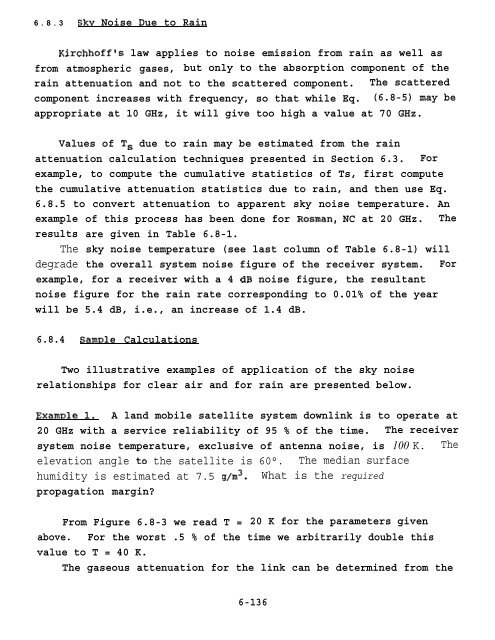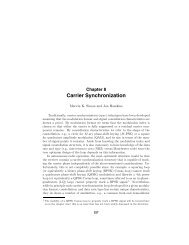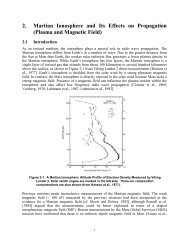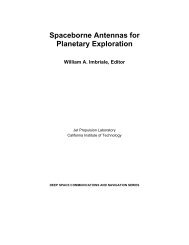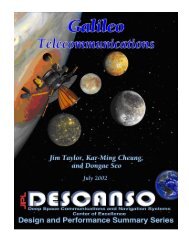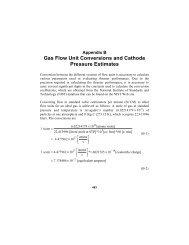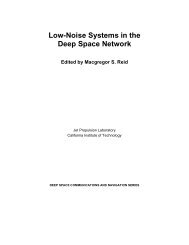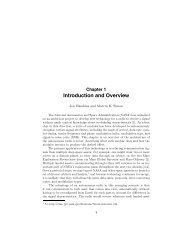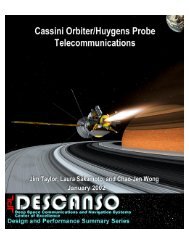Propagation Effects Handbook for Satellite Systems - DESCANSO ...
Propagation Effects Handbook for Satellite Systems - DESCANSO ...
Propagation Effects Handbook for Satellite Systems - DESCANSO ...
You also want an ePaper? Increase the reach of your titles
YUMPU automatically turns print PDFs into web optimized ePapers that Google loves.
6.8.3 sky Noise Due to Rain<br />
Kirchhoffts law applies to noise emission from rain as well as<br />
from atmospheric gases, but only to the absorption component of the<br />
rain attenuation and not to the scattered component. The scattered<br />
component increases with frequency, so that while Eq. (6.8-5) may be<br />
appropriate at 10 GHz, it will give too high a value at 70 GHz.<br />
Values of T~ due to rain may be estimated from the rain<br />
attenuation calculation techniques presented in Section 6.3. For<br />
example, to compute the cumulative statistics of Ts, first compute<br />
the cumulative attenuation statistics due to rain, and then use Eq.<br />
6.8.5 to convert attenuation to apparent sky noise temperature. An<br />
example<br />
results<br />
The<br />
degrade<br />
of this process has been done <strong>for</strong> Rosman, NC at 20 GHz. The<br />
are given in Table 6.8-1.<br />
sky noise temperature (see last column of Table 6.8-1) will<br />
the overall system noise figure of the receiver system. For<br />
example, <strong>for</strong> a receiver with a 4 dB noise figure, the resultant<br />
noise figure <strong>for</strong> the rain rate corresponding to 0.01% of the year<br />
will be 5.4 dB, i.e., an increase of 1.4 dB.<br />
6.8.4 Sample Calculations<br />
Two illustrative examples of application of the sky noise<br />
relationships <strong>for</strong> clear air and <strong>for</strong> rain are presented below.<br />
ExamDle 1. A land mobile satellite system downlink is to operate at<br />
20 GHz with a service reliability of 95 % of the time. The receiver<br />
system noise temperature, exclusive of antenna noise, is 100 K. The<br />
elevation angle to the satellite is 60°. The median surface<br />
humidity is estimated at 7.5 g/m3. What is the required<br />
propagation margin?<br />
From Figure 6.8-3 we read T = 20 K <strong>for</strong> the parameters given<br />
above. For the worst .5 % of the time we arbitrarily double this<br />
value to T = 40 K.<br />
The gaseous attenuation <strong>for</strong> the link can be determined from the<br />
6-136


